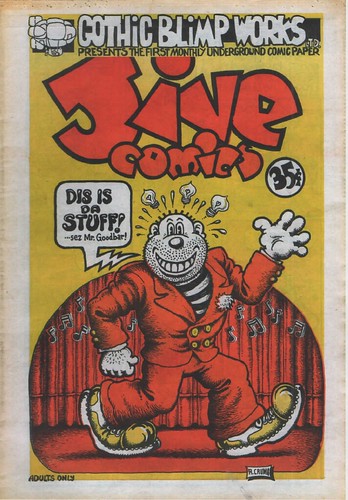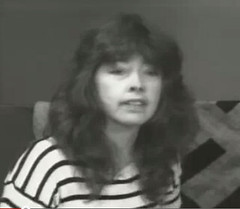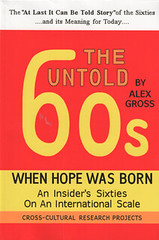Because something is happening here
And you don’t know what it is
Do you, Mister Jones?
– “Ballad of a Thin Man” by Bob Dylan (from “Highway 61 Revisited,” 1965)
 Alan Abramson, 1972.
Alan Abramson, 1972.The times were overwhelming. America was violently awakened from the slumber of the 1950s on Nov. 22, 1963 and quickly found itself inhabiting an unrecognizable, incomprehensible, rapidly evolving reality. The Civil Rights Movement, the Vietnam War, the Free Love Movement, the Women’s Liberation Movement, the Gender Equality Movement, the Consciousness Raising Movement, the Save Our Planet Movement, the Eastern Mysticism Movement, and sex, drugs and rock and roll all conspired to create a giddy, euphoric Renaissance. If you were a nice young person raised in Eisenhower-era suburbia, the questions that consumed you were: “What the hell is going on? What does this all mean? Where do I fit in?” And most importantly: “How do I get invited to the party?”
Enter, The East Village Other. For me it was the Rosetta Stone that enabled me to decode the meaning of the ‘60s. Attending Oberlin College from 1964 to 1968, I experienced an environment that was receptive to the Strange Days that were sweeping the nation. I had a subscription to the Village Voice, which retained an aura of cool, post-Beat sensibility.
All of the sudden, however, it was left way, far behind: things were happening much too quickly for it to process. The ‘60s were not about quiet, low key cool. The ‘60s were flaming hot. There was a void in the media. Nature abhors a vacuum and something Other was desperately needed (I always felt that the name was a play on words, dissing its neighbor from the West Village). Like Athena springing fully clad in armor from the aching head of Zeus, The East Village Other burst upon the scene. The Other was not your parents’ newspaper. Read more…
The Local East Village continues its celebration of the pioneering alternative newspaper of the late 1960s and early 70s, The East Village Other. This weekend, further to last week’s piece by artist Trina Robbins, we’re keeping our attention on the paper’s trailblazing illustrations, starting with an essay from Patrick Rosenkranz, the author of “Rebel Visions: The Underground Comix Revolution 1963-1975.”
 Cover of the first Gothic Blimp Works issue, by Robert Crumb
Cover of the first Gothic Blimp Works issue, by Robert CrumbI never worked for The East Village Other but I was a captivated reader from the first time I picked up an issue in 1966. As an 18-year-old naïve Catholic scholarship student at Columbia University, I was ripe for the revolution. My roommate introduced me to smoking dope that winter and my enhanced appetite often drew me to the student cafeteria, where I couldn’t help but be attracted to the radical contingent from Students for a Democratic Society sitting around their regular table. They looked to my eyes like bomb-throwing anarchists who were having wild sex every night. They often left behind copies of The East Village Other, which I picked up. It was love at first sight.
I’d never seen a publication like this before. It was full of wild accusations and bawdy language and doctored photographs. It had President Johnson’s head in a toilet bowl. It had naked Slum Goddesses, truly bizarre personal ads, and a whole different slant on the anti-war movement than my hometown paper upstate. But best of all, it had the most outrageous comic strips. The continuing saga of Captain High; the psychedelic adventures of Sunshine Girl and Zoroaster the Mad Mouse; Trashman offing the pigs and scoring babes left and right. While I enjoyed many aspects of EVO, I liked the comics the most. Read more…
Coca Crystal (born Jackie Diamond) was EVO’s self-described “gatekeeper,” receptionist, sometime reporter and sometime model until the bitter end, when, as staff and resources dwindled, she became its defacto publisher (she financed the final two issues out of her own purse). Here, she describes how she got her start.
The first time I set foot in the EVO office, it was in the fall of 1969 and I had come to visit with a college friend, Barbara, who was EVO’s secretary.
The office was located on the third floor of the Fillmore East building on Second Avenue and Sixth Street. The place was a wreck. It was freezing, the garbage cans were overflowing, cigarette butts were everywhere, and the walls were covered in fabulous cartoons by the best in underground comix: R. Crumb, Kim Deitch, Spain Rodriguez, Yossarian, Shelton, Art Spiegelman, just to name a few. It was chaos, but a kind of cool chaos.
The office was in a frenzy to get copy ready for the typesetter, and I was asked if I could type. I said I could and was given the job of typing up the classifieds. I had never seen such weird ads. (“Dominant Iguana seeks submissive zebra,” sex ads, odd employment opportunities, legal advice for pot busts). I had to type while sitting on Allen Katzman’s lap (his idea), wearing my winter coat and gloves. When I had completed the classifieds I was told the other secretary, Marcia, was leaving and I could have her job if I wanted it. The pay was $35 a week. I took the job. Read more…
On Feb. 28, the Local East Village inaugurates its exhibit “Blowing Minds: The East Village Other, the Rise of Underground Comix and the Alternative Press” at the NYU Arthur L. Carter Journalism Institute at 20 Cooper Square, appropriately located in the East Village.
From 1965 until 1971, this underground newspaper struck fear into the hearts of millions of Americans. But countless other Americans welcomed it as a glorious ray of hope and joy.
Essentially the flagship of the Sixties, EVO influenced many other so-called underground newspapers in this country and around the world. While resistance to the Vietnam War was often featured, it was scarcely the only theme. Nor was EVO only about sex, drugs, and rock ‘n’ roll, though these were certainly present.
I wrote for EVO from 1968 to 1971 and before that helped out with other underground newspapers in London, Amsterdam, and Berlin. So let me confirm that other EVO topics included feminism, eastern mysticism, the commune movement, new approaches to education, practical problems of artists, the budding ecology/environmental movement, and the struggle for black and Hispanic equality. Read more…








